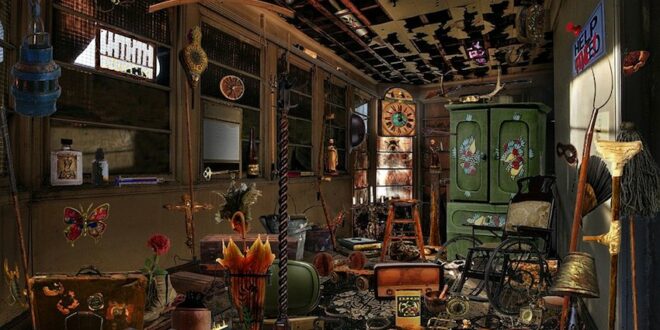Reality TV is full of ‘hoarder’ stories – profiles on people who simply cannot continue functioning in a regular way due to a home crammed – even overflowing – with what most of us would regard as non-essential items. It keeps TV viewers riveted as staff from various agencies negotiate the squalor so often associated with hoarder homes, in an effort to help its occupants ‘downsize.’ But for anyone who has actually experienced hoarder behaviour, first hand, the reality is far from entertaining.
My first encounter with a hoarder came when I retired to a small village on the edge of a salmon fishing river. Many of my ‘neighbours’ were, in fact, owners of fishing cottages, so I only met them in the salmon run season or on occasional weekends. When one of them (Barney – not his real name), realised I was a new arrival in the village, he invited me over for a cup of tea.
To say Barney’s living room was cluttered, was an understatement, but I at first attributed his dozens of boxed jigsaws to the holiday nature of his home (after all, we all like something to do on a wet day). However, as I drank my tea from one of over 80 mugs (I counted them) spilling across his kitchen bench, and watched Barney remove stack after stack of dog-eared magazines, yellowed newspapers, and cake tins from the sofa to make a space to sit, something didn’t feel quite right. Especially when he said his wife didn’t come to the bach because she was a ‘neat-freak.’
I didn’t think much more about Barney’s holiday cottage until he phoned me a few weeks later, after a weekend visit, to say he’d left the hot water cylinder on by accident, and would I go to his place and turn it off (he had a key hidden outside). I said that would be no problem, but as soon as I was in his bach, and had managed, with some difficulty, to push open the living room door into the hallway, I suddenly realised Barney was a full blown hoarder.
Sidling my way along his hall to reach the hot water cylinder cupboard he’d told me was in his bathroom, it was also apparent there was a theme to his hoarding. Boxed games (everything from Scrabble to Ludo, and at least ten sets of Monopoly) were stacked from floor to ceiling. There were console games, badminton and croquet sets, an unopened inflatable spa pool, and so many bags of golf clubs, I lost count. When I finally reached the bathroom, it was clear Barney never used his toilet and shower – they were barely recognisable under more piles of ‘leisure’ goods.’
Strangely, I never saw Barney unload his purchases when he came to the village, but thinking back, he always tended to arrive just on dark. About a year after I’d gone into his cottage to turn off the hot water cylinder, he tacked another small room onto the back of his bach, and over the next few months, it quickly filled up with more ‘stuff.’
Barney was the kindest of holiday neighbours, and good company, and none of his hoarding made him in any way less likeable. In fact, when, sadly, he died just a few years later, and I went to his funeral, the chapel was overflowing with his friends. Interestingly, I had never seen any of them (or Barney’s family) at the bach – in fact, no one other than Barney ever came to the cottage. He seemed to have managed his disorder by restricting it to this one, remote, location.
When, after the funeral, Barney’s son, James, invited me back to his house for drinks with family and close friends, I wasn’t in the least surprised to find everything about James’ home was completely minimalist. The grounds were immaculate (lawns clipped to within an even few millilitres, concrete paths water blasted snowy white, not a weed in the garden beds). Inside, the walls were strangely bare – not a painting or framed photograph was hanging – just pristine wallpaper. There was only just enough furniture to sit on, and I thought there were to be no drinks until glasses and bottles emerged from behind the firmly closed door of a drinks cabinet. Barney’s hoarding, even though it had apparently been confined to his bach, had clearly impacted his family in ways I could only imagine.
Far from being reality TV show entertainment, hoarding is a serious illness that reaches well beyond the life of the sufferer. In our following articles on hoarding, we’ll look at how and why this disorder develops, how to recognise its signs in those we love – or even in ourselves. We’ll also look at how to broach the subject with those we care about, and how to find professional help when its called for.










Join the Discussion
Type out your comment here:
You must be logged in to post a comment.